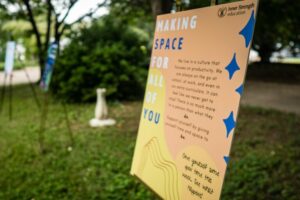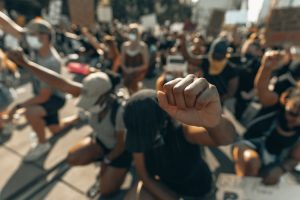It’s Fall. Back to school. Reconnecting with my teacher friends who have been out on summer break. Most of them hold summer jobs, in part for the extra cash to make ends meet, and in part because teachers just like to engage. They’re “people” people.
I was having brunch with one of my best teacher friends. A delightful person, someone you can’t help but love. Warm. Thoughtful. Generous. Yoga and mindfulness practitioner. Postmodern in all its common self-critical ways. Wicked smart. Undergrad and graduate Ivy League schools. Consultant to Microsoft on diversity retention and racial issues.
We talked and ate pancakes and talked … about life, projects, friends. As he told me about the new school he’s in and the old school he left, I started to get a visceral impression of what it’s like to be one of the few African American men teaching in high schools in the city – I started to, through his experience, feel into what he called “racial stress.”[i] That’s when you’re an “outsider,” an “other” because of racial differences. It’s a somewhat invisible holding on, holding your breath which you only realize when you exhale. It’s wondering why you don’t fit in, why you can’t connect, why you can’t feel at ease even though nothing’s said, done, or implied to warrant it. It’s just in the air, when you are the “other.”
As part of the faculty of a liberal public high school over recent years, he would have thought that race wouldn’t have been an issue there. It was only when moving to a private high school that actively cultivates diversity in the staff and student body that my friend experienced the difference. What a difference it makes having two other African American men teaching academic subjects (not just sports). To be in an environment where the stress of being an outsider is not something you try to overcome through being excellent at your work but something you can wonder about together with others. Where you can actually reflect on the causes of racial stress simultaneously as you establish new ways of being that harken better habits of a new reality.
My friend and I talked about how mindfulness can help facilitate these challenging conversations. From that space of wholeness, from the delight that emerges out of a glimpse of unity, love without cause. To go deep in meaningful dialogue that explores the frayed edges of our relationships and our culture, that shines light on deep inequities, painful wounds, and unseen biases we need space. We need space to breath, to trust, and to contextualize what we see. We need to be able to hold this in ourselves and for each other from a ground of already-wholeness so we have the wherewithal to deal with the enormity of what must change and the legacy of what has already happened.
When unconscious racial perspectives are brought to light in that space extraordinary new possibilities can emerge. But not immediately. There is a space of rawness, discomfort, and churned emotions to bear and hold. It takes a degree of delicacy, perception, and vulnerability to create and hold that space and then reflect on our own unseen shortfalls in constructive ways. We want these dialogues to be like big rain drops on dry earth, and we have to hold the torrent so the rain actually soaks in, not just runs off the surface. Then it can soften the crust of our selves and we can turn the soil loose and rich, opening it up to the light of the sun.
When my friend and I finished talking, we went for a long walk on the damp fall path by the river. The sky grey but warm, heavy with the richness of autumn. He was complaining, as homeowners do, about the small annoyances of his neighborhood. In the nice middle class section lined with late 1800s large stone homes with lawns, the parking lot of police precinct happens to be right behind his house across the street. The officers regularly host after hours’ parties there, drinking and letting off steam when they get off shift or celebrate a birthday.
“I have to get up early to get to school to teach,” he harrumphed. “They don’t know what a school schedule is like. So when they go on and on, I have to get up, get dressed, walk over, and ask them to tone it down.”
My heartbeat skipped in its rhythm. “Aren’t you afraid?” I asked.
“Sure.” He replied, somewhat cavalier, “but I’ve got to be able to sleep.”
As we hugged goodbye, I realized how frequently I worry about him. Not just hearing that story, but regularly. I experience just a fraction of what too many mothers, aunts, and cousins feel everyday when their black and brown-skinned boys go out to play.
Amy Edelstein teaches mindfulness and cultural development in the public school system. She also leads professional development days for faculty to learn how to practice mindfulness and facilitates staff dialogues about core issues that can either factionalize a group or bring us all together. To inquire about programming, contact here.
[i] See this College Guide for Students “Coping with Racial Stress” or The Atlantic on racial stress.




1 thought on “Racial Stress & Mindful Spaces”
Beautifully written, Amy, and very insightful! Thank you for sharing this story. I could identify being the “other” as a Jew in a small fundamentalist Christian high school. It definitely was in the air. Thank you for this article. I think we can all identify with being the “other” at some time in our life for one reason or another. It definitely takes a big heart, compassion and understanding to see into another’s predicament with objectivity and care.